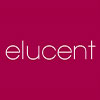Bright, radiant, glowing and luminous. These are just some of the words we use to describe a healthy-looking, youthful appearance.
However, as we age, our skin’s texture and tone changes, leading to a more dull, lacklustre complexion¹. This is because our epidermal cell turnover rate slows and damage from our environment (sun and pollution) becomes more noticeable on the skin¹.
To help reduce the appearance of stubborn dark spots and patches, as well as brighten the skin, look for skincare containing ingredients that help to brighten our complexion and visibly improve skin tone. This is where Elucent Skincare can help. Australian owned and made, Elucent combines innovative research with top skincare science. Elucent Skincare’s Even Tone range contains carefully selected ingredients that work to help you get your natural glow back.


